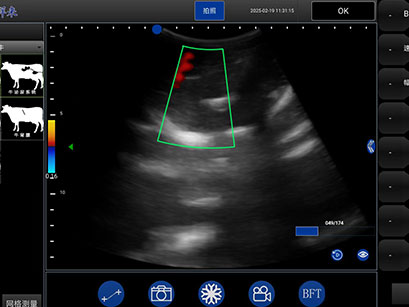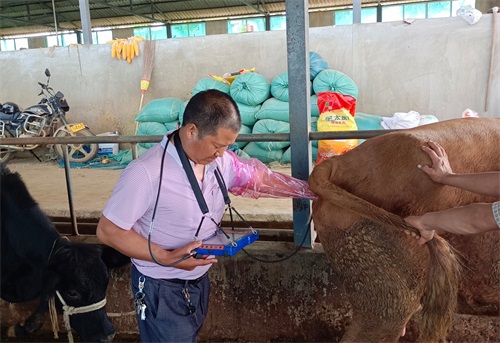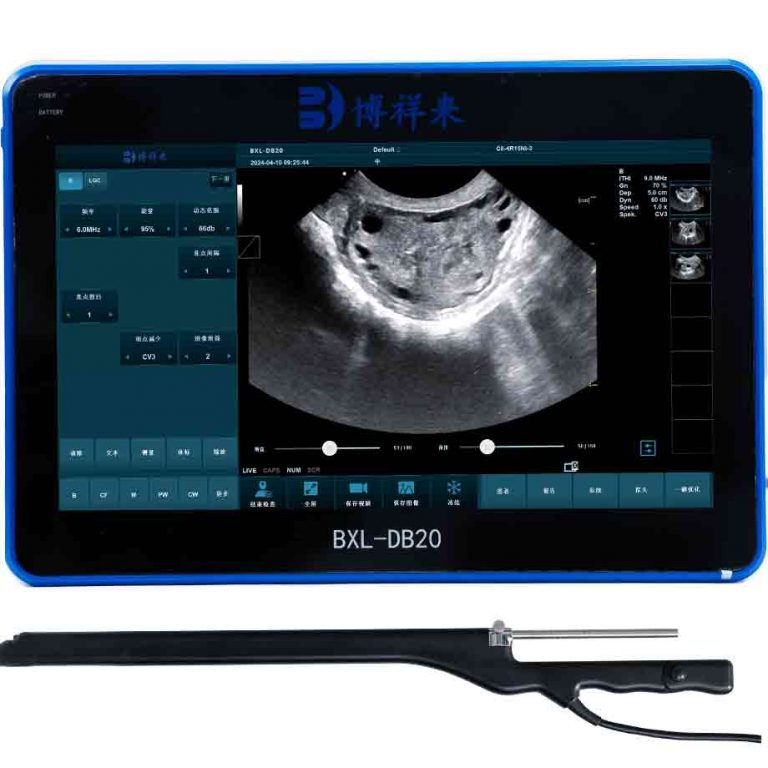How to Use Ultrasound Instruments to Increase Milk Production in Cows
One of the most impactful technologies in dairy farming today is ultrasound. Ultrasound instruments offer a non-invasive, effective way to monitor the health and reproductive status of cows, ultimately leading to increased milk production. This article explores how ultrasound can help dairy farmers improve milk yield and optimize herd management.

1. Early Disease Detection for Healthier Cows
Healthy cows are more productive cows. One of the primary ways ultrasound helps increase milk production is by enabling early disease detection. Many diseases, such as mastitis, digestive issues, and internal infections, can significantly affect milk yield if left untreated. Ultrasound technology allows farmers to identify potential health problems before they escalate.
Mastitis Detection:
Mastitis, an infection of the udder, is one of the leading causes of reduced milk production in dairy cattle. Using ultrasound to detect early signs of mastitis can prevent the condition from progressing to more severe stages. This leads to faster recovery, better milk quality, and reduced chances of infection spreading to other cows, all of which contribute to maintaining a high milk yield across the herd.
Internal Health Monitoring:
Ultrasound scans also allow for the monitoring of internal organs, such as the liver, kidneys, and intestines. Conditions like bloating, infections, or digestive disorders can reduce the cow’s ability to absorb nutrients, impacting overall health and milk production. By identifying these issues early, farmers can implement timely treatments to restore the cow’s health and, in turn, increase milk output.

2. Optimizing Reproductive Health for Consistent Milk Production
Reproductive efficiency is a critical factor in dairy farming. Cows that experience prolonged periods of infertility or have unsuccessful pregnancies can lead to gaps in milk production. Ultrasound technology helps farmers closely monitor reproductive health, improving breeding programs and ensuring cows are consistently producing milk.
Pregnancy Detection:
Ultrasound provides a reliable method for confirming pregnancy early, usually as soon as 28 days after insemination. Early pregnancy detection helps farmers avoid unnecessary culling of non-pregnant cows and optimize the breeding cycle. By managing reproduction efficiently, farmers ensure that cows are not dry (not lactating) for extended periods, which maintains a steady supply of milk and improves overall herd productivity.
Monitoring Uterine and Ovarian Health:
Ultrasound also allows for the evaluation of the ovaries and uterus to detect abnormalities, cysts, or infections that may affect fertility. By identifying these issues early, farmers can implement appropriate treatments to improve the chances of successful pregnancies. Healthy cows with optimal reproductive health will have shorter dry periods and longer lactation periods, which directly contributes to sustained milk production.

3. Precise Breeding Management for Better Genetics and Increased Yield
Breeding plays a pivotal role in improving milk production, and ultrasound instruments support precise breeding management. By using ultrasound to track follicle development and monitor estrus cycles, farmers can time artificial insemination (AI) more accurately, increasing the chances of pregnancy and optimizing milk yield potential.
Monitoring Follicular Development:
Ultrasound allows farmers to monitor the size and development of ovarian follicles, enabling the precise timing of AI. Timely insemination increases the chances of conception and ensures that cows calve on schedule, maintaining a steady lactation cycle and higher milk production.
Genetic Selection:
Ultrasound also helps farmers identify high-performing cows that should be prioritized in breeding programs. By assessing the reproductive status of each cow, farmers can select the best genetics for traits like milk yield, disease resistance, and longevity. Over time, this results in a more productive herd that produces more milk per cow.
4. Improved Cow Comfort and Welfare for Enhanced Milk Output
Cows that are stressed or uncomfortable are less likely to produce milk efficiently. The non-invasive nature of ultrasound makes it a stress-free tool for monitoring cattle health. Using ultrasound instruments allows farmers to regularly assess the health and welfare of their cows without causing distress, contributing to better milk production.
Non-Invasive and Low Stress:
Unlike other diagnostic tools, ultrasound scans do not require invasive procedures. This reduces stress on the animals, promoting a calm environment that encourages milk production. The ability to monitor cows frequently without causing discomfort ensures optimal herd welfare and improves productivity.
Minimizing Downtime and Stress-Related Issues:
Stress and discomfort can lead to a reduction in milk production. By using ultrasound to identify and address health issues quickly, farmers minimize the risk of prolonged illness or injury, helping cows stay healthy, comfortable, and productive throughout their lactation cycles.

5. Long-Term Cost Savings and Profitability
While the initial cost of ultrasound equipment may seem high, the long-term benefits far outweigh the investment. By improving reproductive efficiency, detecting diseases early, and ensuring optimal cow health, ultrasound technology helps dairy farmers reduce veterinary costs, minimize production losses, and increase milk output.
Reducing Veterinary Expenses:
Ultrasound helps identify health issues early, reducing the need for expensive treatments or emergency veterinary visits. Early diagnosis of diseases like mastitis or reproductive issues allows for timely intervention, which can prevent more severe conditions and expensive treatments down the line.
Maximizing Milk Yield:
By optimizing breeding cycles, improving reproductive health, and maintaining a healthier herd, farmers can ensure that cows are consistently producing milk. This leads to higher overall milk yield, improving the profitability and sustainability of the dairy farm.




